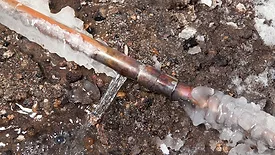Plumbing & Mechanical Engineer
Guard on Compliance | Misty Guard
U.S. manufacturers face compliance challenges and legal conflicts as the EU’s new Corporate Sustainability Due Diligence Directive extends its reach across global supply chains.
Read More
Preventing sprinkler freeze failures starts long before the cold arrives
Why clearly defining heated envelopes, coordinating insulation and choosing the right dry technologies are essential to reliable fire protection in cold conditions.
December 9, 2025
Cautious growth through critical change: 2026 Plumbing Industry Outlook
Markets stabilize, regulations intensify, and AI accelerates: industry leaders share where opportunities will emerge.
December 5, 2025
Project Profile
Case study: Solving for shower safety and layout flexibility
How drainage innovation supported the first hospital built in Celina, Texas.
December 4, 2025
Case Engineering hires Koen Erickson as mechanical engineer
Erickson has been brought into Case Engineering.
November 26, 2025
Guard on Compliance | Misty Guard
Design for compliance: navigating the next generation of plumbing and mechanical standards
New energy, water and safety standards redefine compliance for mechanical and plumbing professionals.
November 21, 2025
Case Engineering, Inc. celebrating 30th anniversary, new leadership and retiring founder Darrell Case, PE, LEED AP
COO/Principal/Senior Mechanical Engineer Matt Case announced as firm’s new President/CEO.
November 19, 2025
Training and Education
How Do Volunteers Save Lives Through Ship Plumbing Training?
Mercy Ships’ partnership with SkillCat trains volunteers to maintain life-saving plumbing systems aboard hospital ships.
November 19, 2025
Project Profile
Radiant roots: preserving history while powering modern comfort
Elaborate plan delivers efficiency for former Amish barn built in 1838.
November 14, 2025
Renewable Heating Design | John Siegenthaler
Elegance extended: How to use the homerun system of connecting heat emitters
November 12, 2025
Keep your content unclogged with our newsletters!
Stay in the know on the latest plumbing & piping industry trends.
JOIN TODAY!Copyright ©2025. All Rights Reserved BNP Media.
Design, CMS, Hosting & Web Development :: ePublishing














